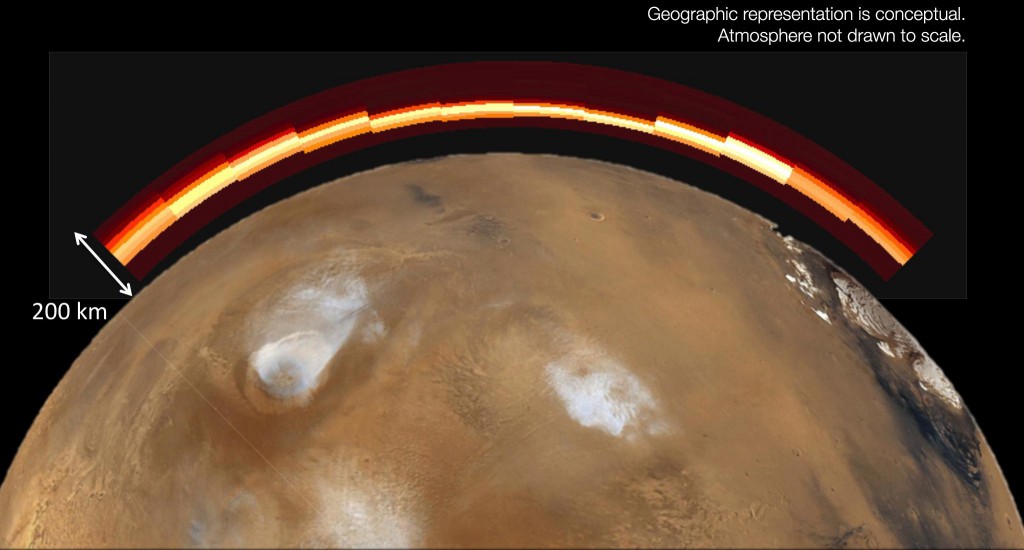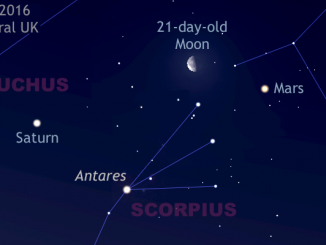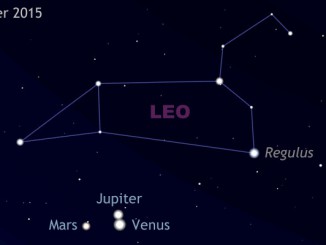
A comet that flew close to Mars showered the red planet with fine cometary dust, according to observations by a trio of spacecraft.
Comet C/2013 A1 Siding Spring passed within 139,500 kilometres of the red planet on 19 October, the closest a comet has ever been seen to come to a planet without actually colliding with it. To avoid being damaged by the comet dust, all spacecraft orbiting Mars moved to the far side of the planet for 20 minutes while the comet dust was at its most intense, but this did not prevent them from studying the effects it had on Mars’ atmosphere.
“They call this comet encounter a once-in-a-lifetime event, but it’s more like once in a million years,” says Nick Schneider of the University of Colorado, Boulder, who works on the MAVEN (Mars Atmosphere and Volatile Evolution) spacecraft.
The European Space Agency’s Mars Express spacecraft detected an increase in electrons in Mars’ upper atmosphere, partly ionising it. This was attributed to fine cometary dust penetrating the atmosphere, which led to a meteor storm of thousands of meteors per hour. The increase in electrons led to the creation of a temporary new layer of charged particles in the ionosphere, which runs from an altitude of 120 kilometres to several hundred kilometres above. This is the first time such an event has been seen, even on Earth the extra density of electrons was measured to be five to ten times higher than normal by NASA’s Mars Reconnaissance Orbiter. Another NASA spacecraft, MAVEN, which also observed the new layer in the ionosphere, will monitor for any long-term events as it goes about its regular duties of studying Mars’ atmosphere.
MAVEN’s Imaging Ultraviolet Spectrograph was able to ascertain the species of ions that flooded into the ionosphere from the comet, the first time a comet that has come direct from the distant Oort Cloud has been sampled in this way. It detected the signal of magnesium, iron and sodium ions following the meteor shower, a signal that dominated Mars’ ultraviolet spectrum for hours afterwards, taking two days to dissipate.
The results show that dust from the comet, which has a nucleus two kilometres across, according to high resolution images from the Mars Reconnaissance Orbiter, had a dramatic effect on Mars’ atmosphere.
“Observing the effects on Mars of the comet’s dust slamming into the upper atmosphere makes me very happy that we decided to put our spacecraft on the other side of Mars at the peak of the dust tail passage and out of harm’s way,” says Jim Green, Director of NASA’s Planetary Science Division.
All five spacecraft in orbit around Mars – NASA’s MAVEN, Mars Reconnaissance Orbiter and Mars Odyssey, Europe’s Mars Express and India’s Mars Orbiter, came through the cometary close encounter unscathed.



